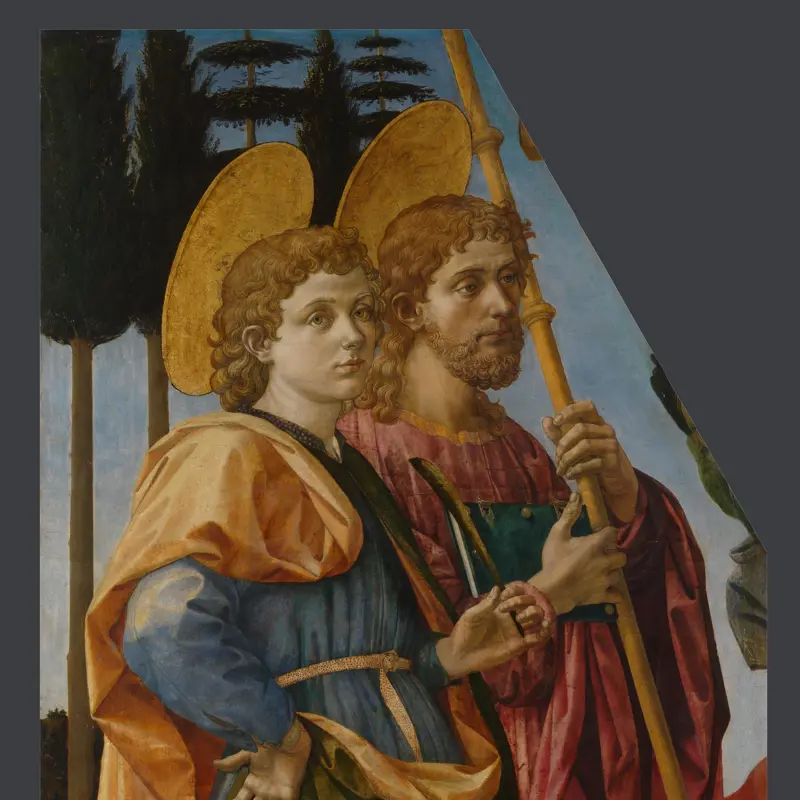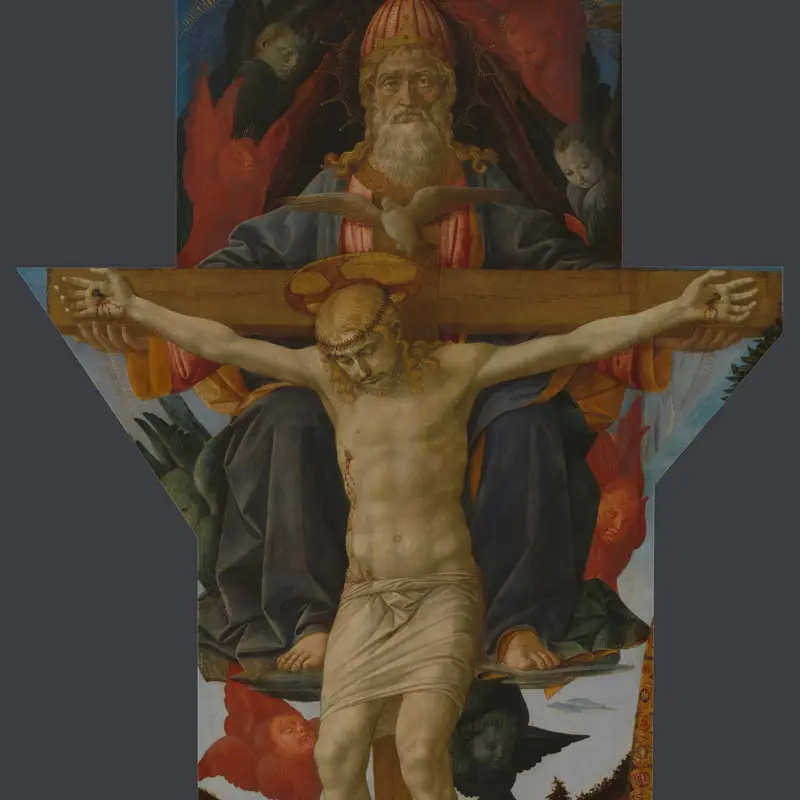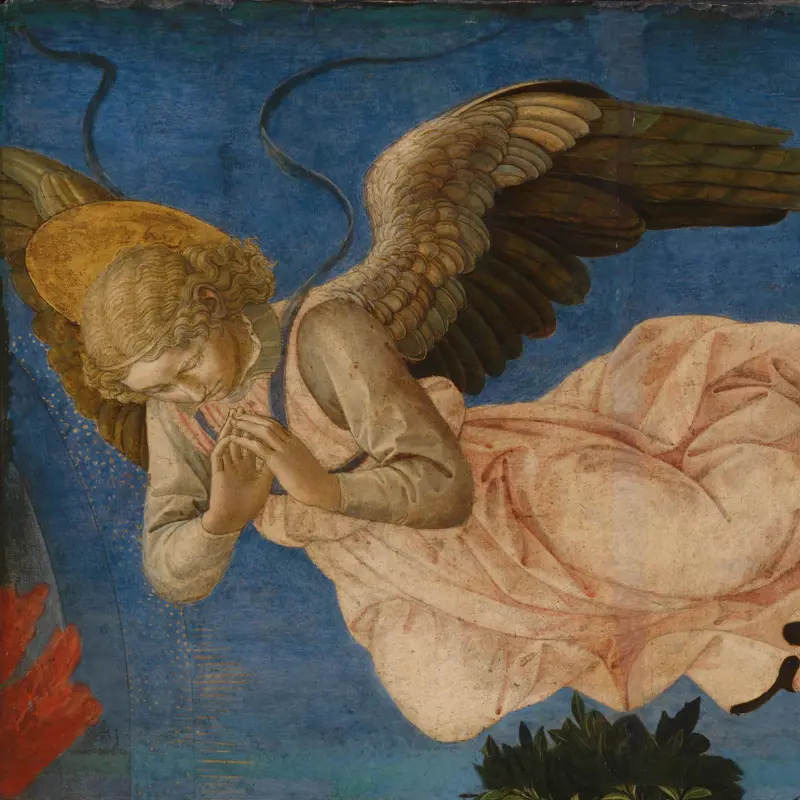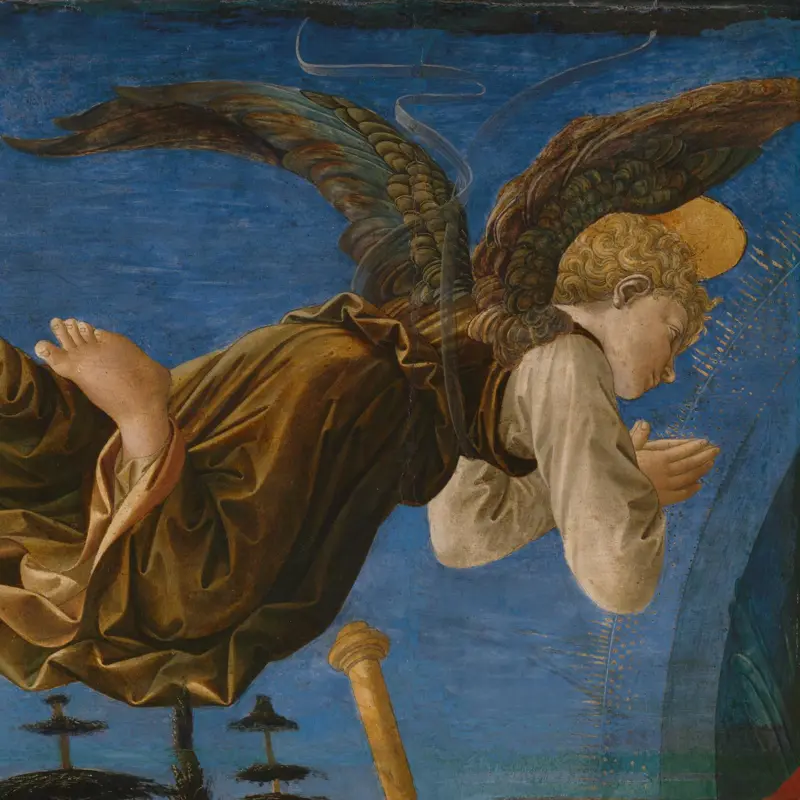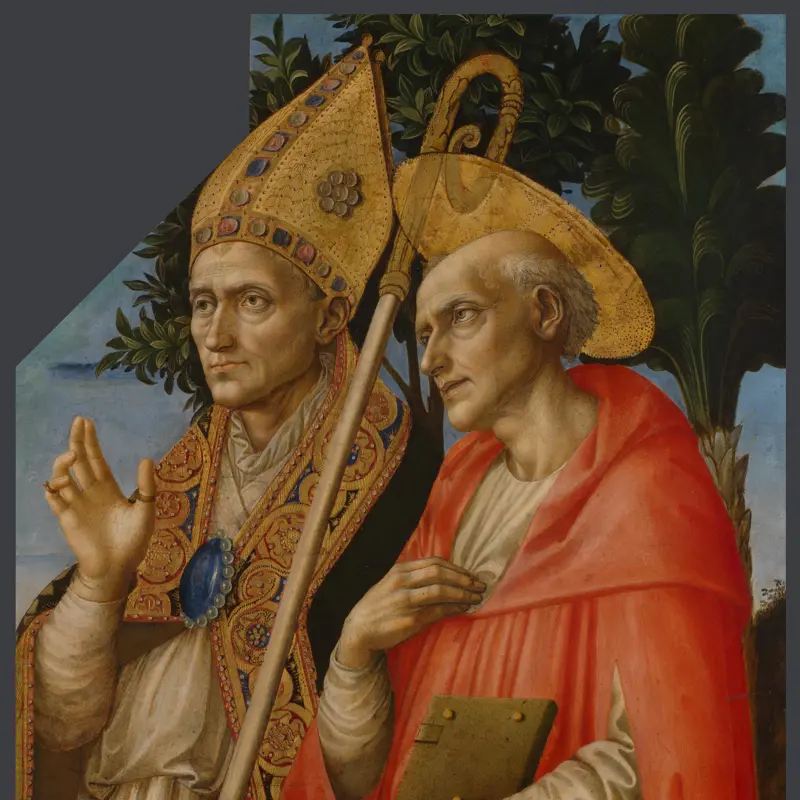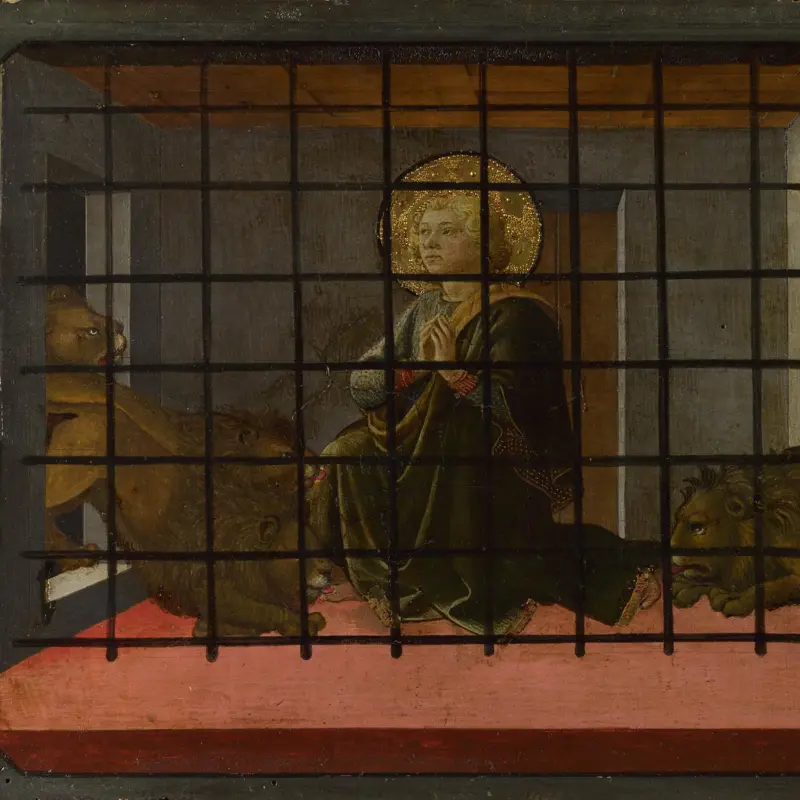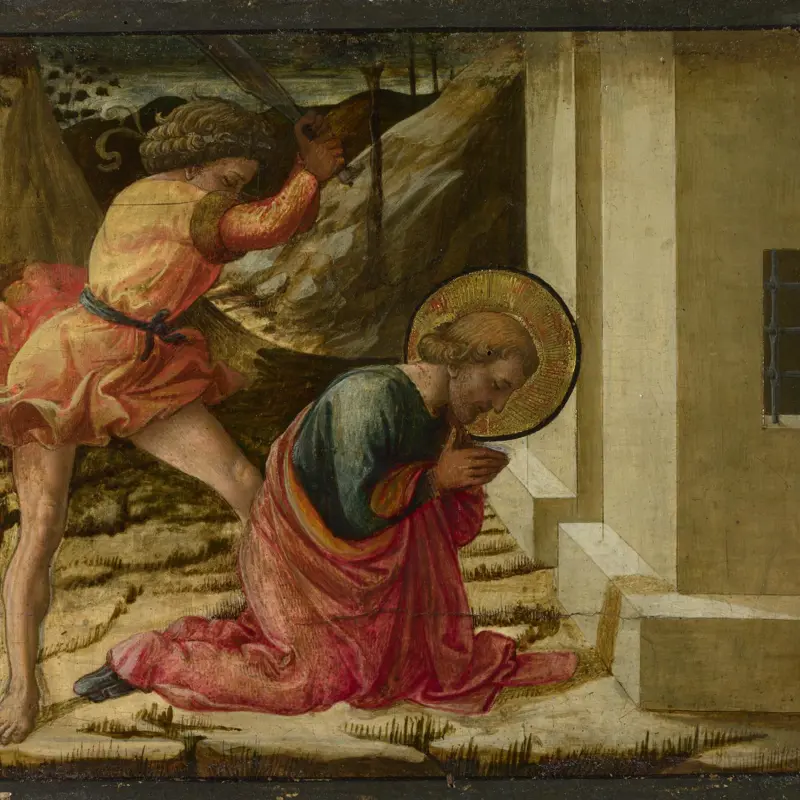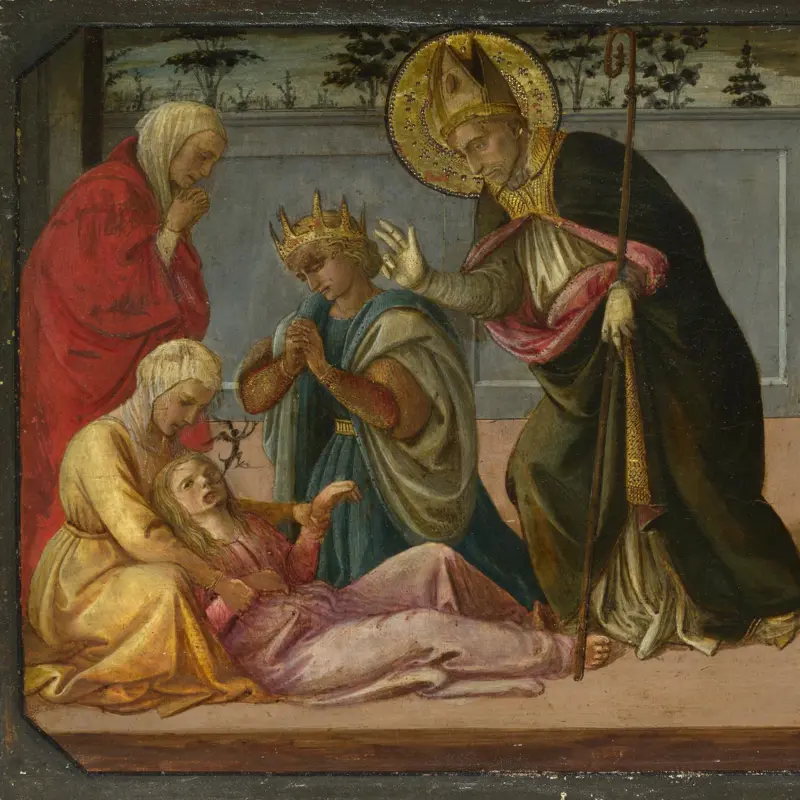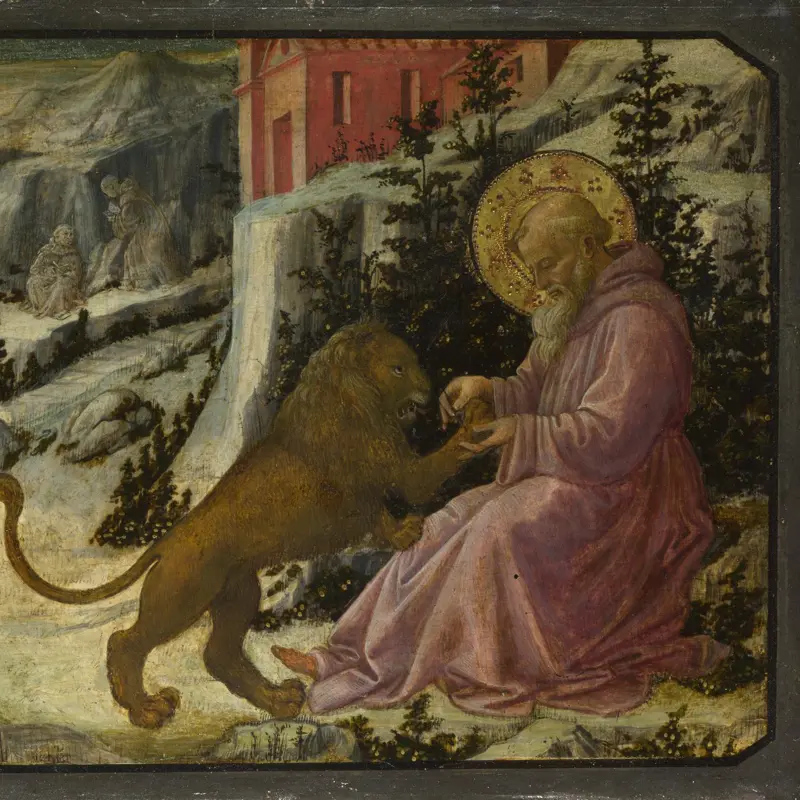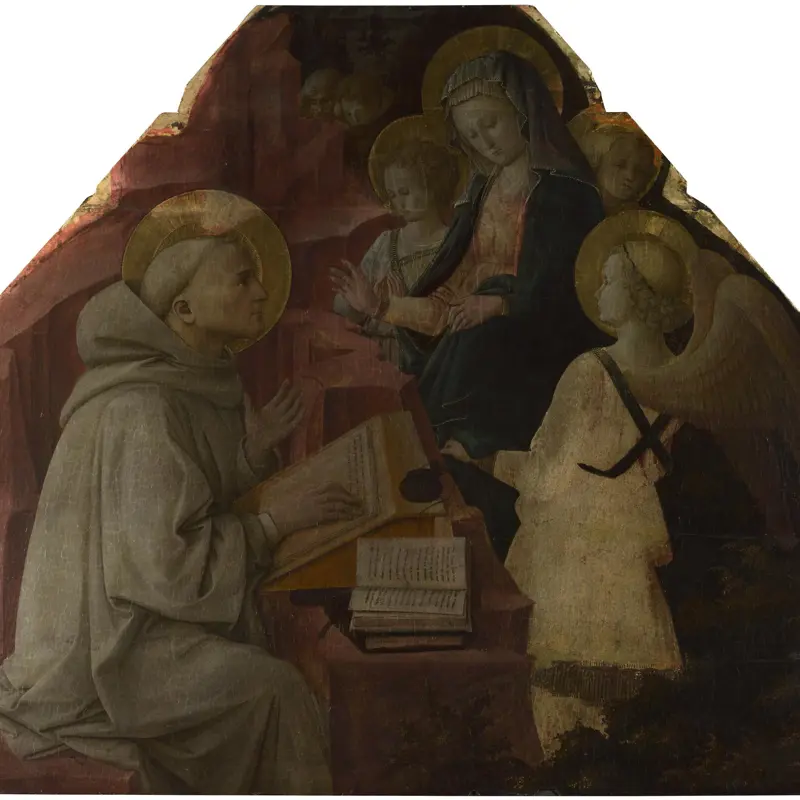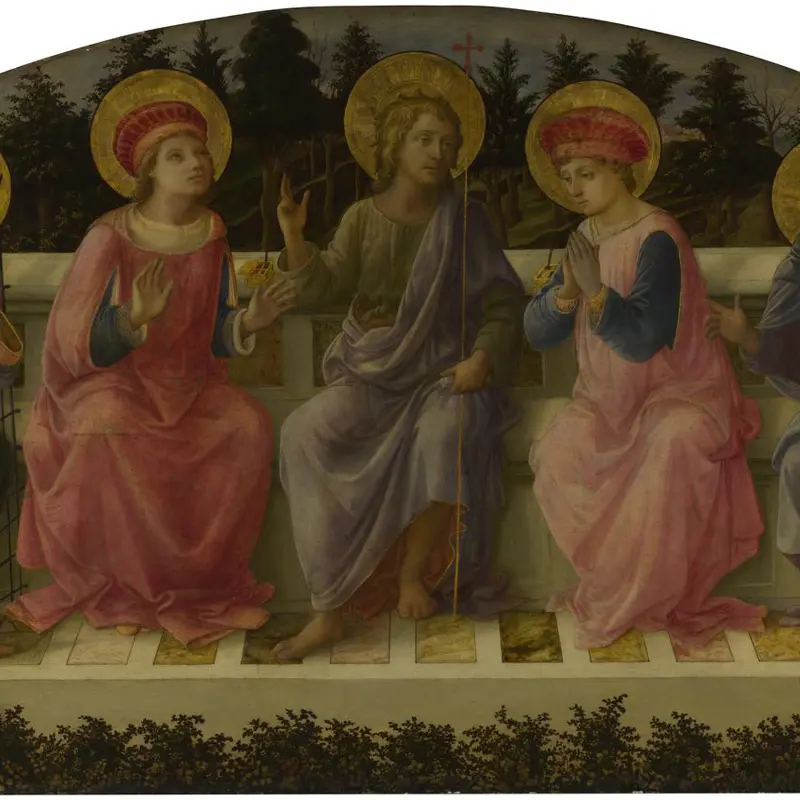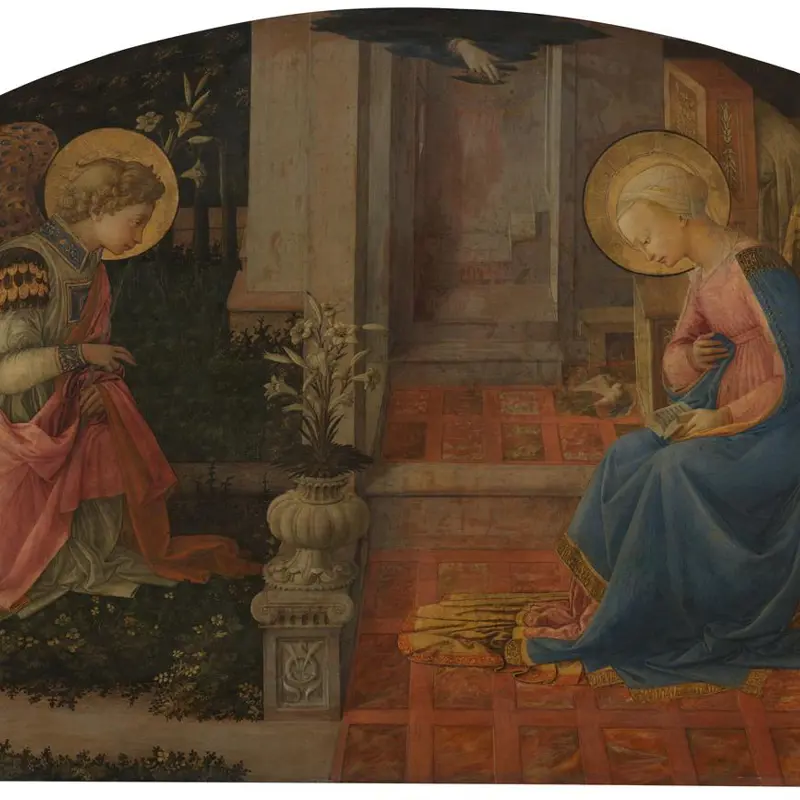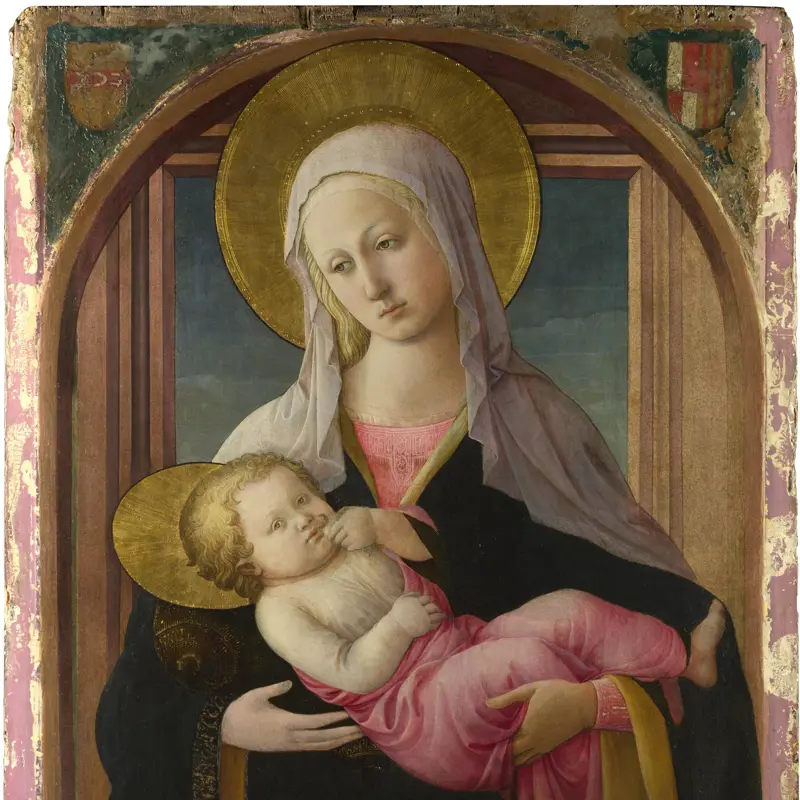Fra Filippo Lippi and workshop, 'Beheading of Saint James the Great: Predella Panel', 1455-60
About the work
Overview
Saint James kneels in prayer; behind him a vigorous executioner raises his sword. James the Great was the first of Christ’s apostles to die for his faith, being put to death by King Herod Agrippa in Jerusalem in AD 44.
This is one of five scenes from the predella, the bottom tier, of the Pistoia Santa Trinità Altarpiece, painted for a confraternity of priests in Pistoia in the late fifteenth century. The altarpiece was begun by Pesellino and completed by Fra Filippo Lippi and his workshop after Pesellino’s death.
The underdrawing (the preliminary outlining of a composition) of these scenes is hugely detailed, and it seems likely that Lippi did the designs but left the painting of some of the panels to his assistants.
Key facts
Details
- Full title
- Beheading of Saint James the Great: Predella Panel
- Artist
- Fra Filippo Lippi and workshop
- Artist dates
- Born about 1406; died 1469
- Part of the group
- The Pistoia Santa Trinità Altarpiece
- Date made
- 1455-60
- Medium and support
- Egg tempera on wood
- Dimensions
- 27.5 × 38 cm
- Acquisition credit
- Presented by Mr and Mrs Felix M. Warburg through the Art Fund, 1937
- Inventory number
- NG4868.2
- Location
- Room 60
- Collection
- Main Collection
- Frame
- 20th-century Replica Frame
Provenance
Additional information
Text extracted from the ‘Provenance’ section of the catalogue entry in Dillian Gordon, ‘National Gallery Catalogues: The Fifteenth Century Italian Paintings’, vol. 1, London 2003; for further information, see the full catalogue entry.
Exhibition history
-
2023Pesellino: A Renaissance Master RevealedThe National Gallery (London)7 December 2023 - 10 March 2024
Bibliography
-
1951Davies, Martin, National Gallery Catalogues: The Earlier Italian Schools, London 1951
-
1986Davies, Martin, National Gallery Catalogues: The Earlier Italian Schools, revised edn, London 1986
-
2001
C. Baker and T. Henry, The National Gallery: Complete Illustrated Catalogue, London 2001
-
2003Gordon, Dillian, National Gallery Catalogues: The Fifteenth Century Italian Paintings, 1, London 2003
Frame
This is a twentieth-century reproduction frame, made by an unknown workshop in Paris. Constructed in pine with water gilding, the altar frame features pilasters with gilt-stopped fluting in blue and gold, crowned by Corinthian capitals. The entablature, with an intricately painted frieze in gold and blue, showcases palmetto motifs.
The creation of the reproduction frame was arranged in 1929 by the art dealer Joseph Duveen (1869–1939). It replicates the frame that originally housed The Holy Trinity by Donnino and Angelo di Domenico del Mazziere, in the Church of Santa Spirito, Florence. Hidden ornaments lie underneath the loaned panels.
The reproduction predella frame was crafted at the Gallery in the 1990s to house four individual panel paintings. It was constructed with vertical divisions and water-gilded to match the altar frame.
The altar frame of the original Pistoia Santa Trinità Altarpiece was lost when its panel was cut into pieces in 1783.
About this record
If you know more about this work or have spotted an error, please contact us. Please note that exhibition histories are listed from 2009 onwards. Bibliographies may not be complete; more comprehensive information is available in the National Gallery Library.
Images
About the group: The Pistoia Santa Trinità Altarpiece
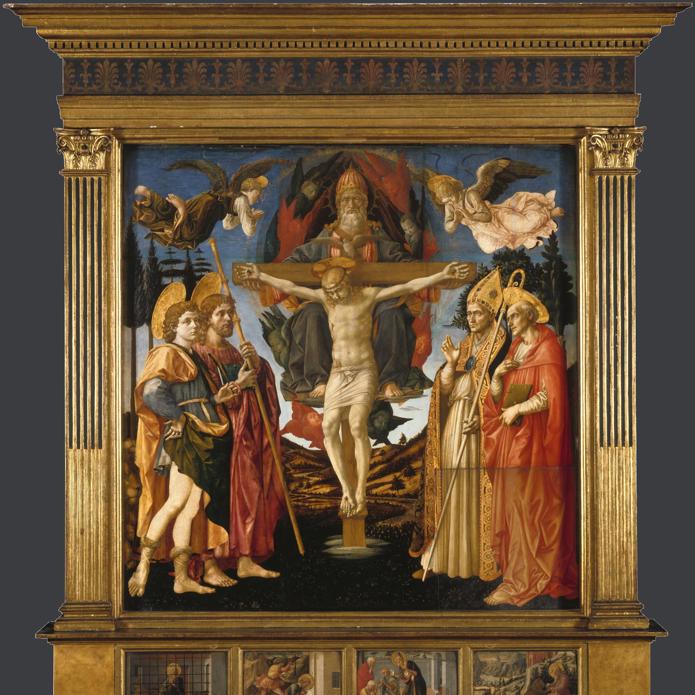
Overview
This large altarpiece – one of the few in the National Gallery which is almost complete – has had an eventful life. It was commissioned in 1455 from the Florentine painter Francesco Pesellino, and is his only surviving documented work. He died in 1457 and it was finished by Fra Filippo Lippi and his workshop. We know a lot about how and why it was made from the records of the confraternity who commissioned it.
From 1465 it sat on the high altar of the church of the Holy Trinity at Pistoia, but in 1793 the confraternity was suppressed and the altarpiece was taken apart, with the main panel sawn into pieces, and dispersed. Most of it was gradually acquired by the National Gallery and the altarpiece reassembled.
This is the earliest pala (an altarpiece with a single main panel) in the National Gallery.

